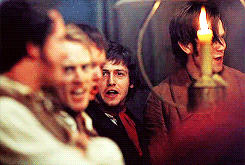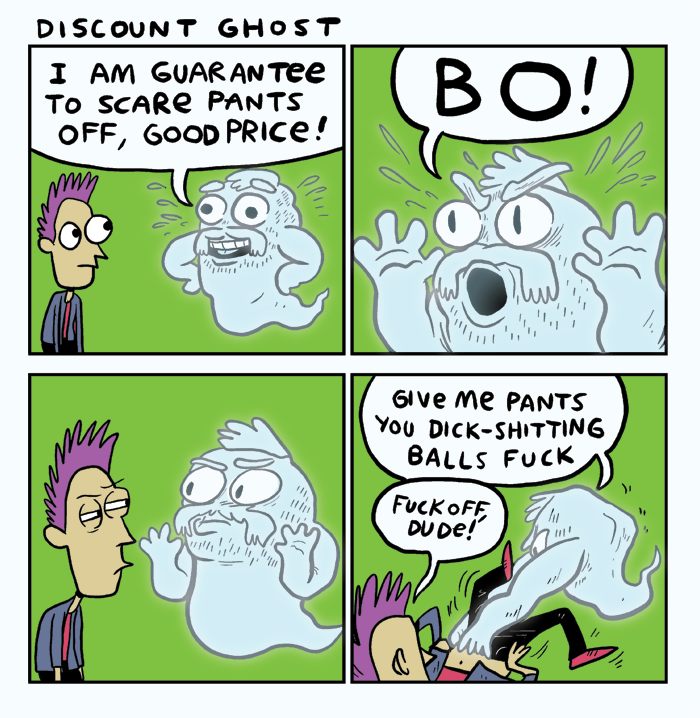Peter Nero and the Philly Pops: Classical Gangnam Style! -720p- (by Deadlyxlegend1)
Shared posts
Dramatic moment Prince Harry runs for an ice cream van during...
Dramatic moment Prince Harry runs for an ice cream van during Afghanistan interview (by producertom85)
Hola Unblocker Gives You Access to iPlayer, Netflix, Pandora, Hulu, and More Regardless of Region
 Chrome/Firefox: Hola Unblocker is a browser extension that removes region locks and allows you to watch BBC iPlayer, Netflix, Hula, Pandora, and more regardless of where you live. It doesn't require any set up and works right out of the box. More »
Chrome/Firefox: Hola Unblocker is a browser extension that removes region locks and allows you to watch BBC iPlayer, Netflix, Hula, Pandora, and more regardless of where you live. It doesn't require any set up and works right out of the box. More » europeansdomusicalsbetter: saynotohorcruxes: dontdishonorthebarricade: omg guys im cryinG THIS...
omg guys im cryinG THIS GIF LOOKS LIKE SOMEONE SAID SOMETHING REALLY OFFENSIVE AND THEY’RE ALL JUST SITTING THERE IN *STUNNED SILENCE*
“We’re out of Nutella…”
“Series 3 of Sherlock has been delayed…”
“Moist.”
“I’m NOT going to leave Britney alone.”
“I think Comic Sans is a top-notch font.”
Laurie Anderson - Difficult Listening Hour (by LukeK79)
billtronWhy so serious?
2013 Golden Globe Superhero Awards Also In Attendance: The...
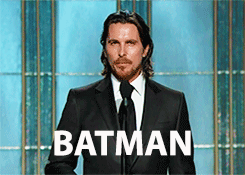

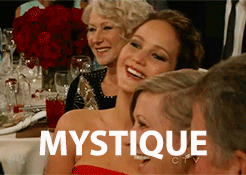
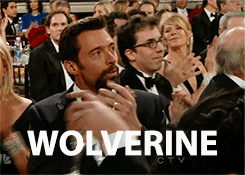



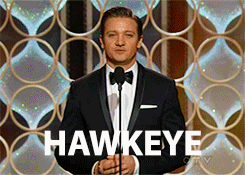
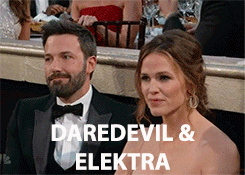
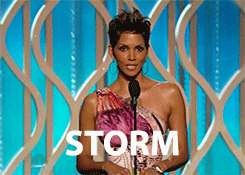
2013
Golden GlobeSuperhero AwardsAlso In Attendance: The Batman With Nipples, Dr. Chase Meridian, Invisible Woman, War Machine, Sabretooth, Two-Face, Elektro, Mr. Freeze, Colonel Chester Philips, Aunt May, Chudnofsky
"On Friday, I discussed the latest episode of Portlandia with Chris Wade. At the end of our..."
- Nerd PSA on Portlandia: Funny, shrewd, and a little bit sexist. (VIDEO)
"Well, they aired it, seemingly unchanged. And it’s now for sale in the US iTunes store. They also..."
- Jonathan Coulton Song Aired on Glee | The Mary Sue
"Asked about his new or upcoming projects, Coulton joked, “I’m creating a new TV show. It’s called..."
- Did Glee Rip Off a Jonathan Coulton Cover of ‘Baby Got Back’? | Underwire | Wired.com
"If you ever need to make a white person feel indebted to you, wait for them to mention a book, film,..."
- #101 Being Offended « Stuff White People Like
Memory to myth: tracing Aaron Swartz through the 21st century

I met Aaron Swartz in Cambridge shortly after he’d been indicted for downloading lots of JSTOR articles on MIT’s network in 2011. My Wired colleague Ryan Singel had been writing about his story, and I’d talked a lot with my friends in academia and publishing about the problems of putting scholarship behind a paywall, but that was really the level at which I was approaching it. I was there to have brunch with friends I’d known a long time only through the internet, and I hadn’t known Aaron that way. I certainly didn’t want to use the brunch to put on my journalist hat and pepper him with questions. He was there primarily to see his partner Quinn Norton’s daughter Ada, with whom he had a special bond. The two of them spent most of their time playing in the bedroom, behind where the rest of us sat, ate, and talked; sometimes you could hear them laughing together from the living room. And that’s mostly how I think of him still: a too-young father figure who occupied an immense role in the lives of people close to me.
Sticky TOC engaged! Do not remove this! “I thought he looked happy. I was wrong.”I was supposed to see Aaron the day before he hanged himself. Andy Baio had invited both of us to a small meetup at a bar on New York’s Lower East Side, and I was excited to catch up with Andy and other friends and to meet some new people. As it turned out, Aaron made it to the party and I didn’t; a late-breaking story kept me in for the night. Nobody thought that we wouldn’t have another chance to meet. Andy wrote that Aaron “was deep in conversation, smiling and chatting. I thought he looked happy. I was wrong.”
After major depressive disorder threatened my life in my twenties, I knew how easy it can be to cover your exhaustion and anger to those around you. All you need is to keep people at arm’s length, keep them from wanting to look too closely, and hide in plain sight, like filling a hole in a cracked plaster wall with toothpaste. I knew how depression, at a chemical level, robs you of the rewards of being happy; how it turns the people around you into two-dimensional cutouts exactly when you need them most; how the disease makes you believe your good days don’t really matter and your bad days are the way the world really is.
I disclose all this as prologue because it affects how I write about Aaron, the path I try to chart between proximity and distance. It’s in the hesitation at the keyboard before I type “Swartz” to refer to someone I always knew as “Aaron.” It was there when I furiously scribbled notes during applause lines at his memorial while a voice in the back of my head intoned, journalists don’t clap.
“If you believe that technology is making the world a better place, why do you believe that?”I was deeply uncomfortable in the moments the memorial service turned into a political rally, especially when Aaron’s partner Taren Stinebrickner-Kauffman demanded the audience ask hard questions of themselves, including “if you’re in the tech sector, why are you there? What do you really believe in? If you believe that technology is making the world a better place, why do you believe that? Do you really understand what makes the world a bad place to begin with?” When I think of Aaron, living out of a backpack even after he’d become wealthy, challenging other activists and philanthropists as irrational and unproductive, and unable to eat much more than white rice or water crackers without pain, I think that discomfort is entirely appropriate. We should be uncomfortable. We should be asking better questions. We should see nothing as inevitable.
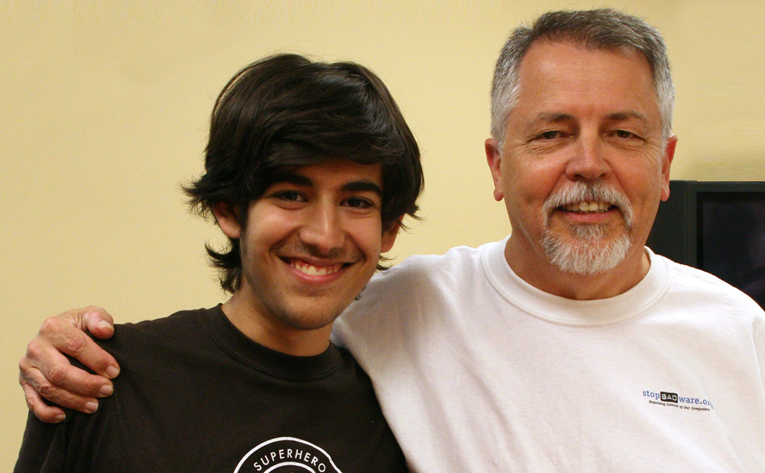
Aaron Swartz with Doc Searls at the Berkman Center, 2006. Photo: Doc Searls
“Politics is in user space”“Politics is in user space.”
Aaron, I’ve learned, had a way of implicating you, as a person, as an ethical being, as a social agent embedded in a wider world, through issues that could be seen as “just” about technology, law, or policy. At Aaron's memorial, Quinn said “he lived a life of thought and action, and that is the rarest thing in this world, in this moment in history, to marry thoughts with actions.” You can parse that in multiple ways: a boy who had a brain and a heart, who had strongly-reasoned beliefs about what technology was for and the computing skills to put his ideals into practice.
We should be uncomfortable. We should be asking better questions. We should see nothing as inevitable.At his memorial, Swartz's friend and Cluetrain Manifesto co-author Doc Searls described Aaron’s duality with a computing metaphor:
Geeks tend to avoid the legal stuff. They tend to not want to screw with it. They tend to not want to deal with the politics. Linus Torvalds would say, “I only do kernel space. I don’t do user space.” Politics is in user space. Justice is in user space. Aaron was in both. And there are so few geeks that stand out and go that extra step, to defend the rest of us, to look out into the future and see what needs to be, and work on that, on making that happen... We need to do the work that he started.
Just what was Aaron’s work? Most stories since his death have called him an activist or a hacker, sometimes both. This job description is invariably paired with an implausibly long and broad list of career accomplishments. These are usually rattled off in a way that’s either misleading or leaves the reader little clue as to what Swartz actually did. “Inventor,” “founder,” “leader,” “co-founder”: intone these magical words enough times, and you move from memory into myth.
Aaron was already the subject of mythmaking enough times during his life. Some of those myths he wove himself, some he fought, some he joked about, and some he allowed others to believe. He was not a myth, but a young man of unusual gifts and sensitivity, one who came of age at a particular moment in the history of computing and the history of global politics. That moment was and still is characterized by a potent mix of possibility, urgency, and dread. Through that experience, he developed a powerful set of interrelated values that connect his achievements. I want to put Aaron’s life and accomplishments into that context, because I think it’s the only way we can understand him, ourselves, and the work still to be done.

Aaron Swartz (far left) at the ArsDigita Prize awards, Cambridge, MA, 2000. Photo: Elsa Dorfman
RSSRSS and the Semantic Web
Searls met Aaron when he was 14, and describes him as “already a figure in the industry, in spite of his youth and diminutive stature at the time.” Everyone seemed to have already heard of Aaron. In a 2002 blog post, he writes that
when people recognized me and introduced themselves, each time their comments got exaggerated. “Ah, I heard you’re working for the Creative Commons.” “Oh, I heard you help develop the Creative Commons website.” “You’re the guy that runs the super-coder Creative Commons website!” “Hey, it’s the kid that runs the Creative Commons.”
By this time, he had already dropped out of high school to work full-time on software and standards, learning Python and evangelizing about inside-industry topics like good metadata and general-purpose computing, things it was thought no teenager was interested in. He carried a backpack and worked on a beat-up PowerBook with a burned-out monitor. Searls says that no one could read its screen but Aaron; if you pressed him about it, he would say it was “just an extra security feature.”
Aaron had grown up outside of Chicago, in Highland Park, Illinois. His father, Robert Swartz, had started a small software company, “Mark Williams” (after Aaron’s grandfather), that made a Unix clone and C compilers and debuggers for IBM PCs. Bob Swartz would later become an intellectual property consultant for MIT’s famous Media Lab. Aaron had been on Usenet since he was 8; his first post, on the Beakman’s World newsgroup, shows that he already had his “aaronsw” handle at both aol.com and his father’s company’s server, mwc.com. “Notice how even then I had two email addresses,” Swartz wrote in 2002.
After reading Tim Berners-Lee’s 1999 book Weaving the Web, Aaron began building “The Info Network,” an open-standards precursor to Wikipedia. He also began experimenting with a news syndication site called my.info, which led him to early versions of RSS. In 2000, his work on The Info Network made him a finalist in the 2nd ArsDigita prize. Winning the contest outed him as a thirteen-year-old to unsuspecting internet friends. As a finalist, Aaron won $1000, free access to a web server for life, and a two-day trip to MIT, where he met with Berners-Lee and Hal Abelson. (In 2013, Abelson would be named to head an inquiry into MIT’s actions during the JSTOR case, and Berners-Lee would write, “Aaron dead. World wanderers, we have lost a wise elder. Hackers for right, we are one down. Parents all, we have lost a child. Let us weep.”)
While barely a teenager, aaron was already working with leading technologists to craft open standardsAfter visiting Cambridge, Aaron joined the twelve-member RSS-DEV working group developing the specification for RSS 1.0. This group, led by Rael Dornfest, built on work by Dave Winer and others but was also essentially starting fresh. Aaron had developed his own syndication code and used pre-1.0 versions of RSS at The Info Network. With the RSS-DEV group, he helped incorporate semantic web elements into the new specification. Eventually, this spec would be superseded by Winer’s RSS 2.0, which largely drew on work on the pre-1.0 specifications and not RSS 1.0. The numbering and name changes are frankly confusing. In my opinion, it makes more sense to think of the RSS-DEV team’s RSS 1.0, Winer’s RSS 2.0, and the IETF’s Atom as part of an often-contentious family of XML syndication tools that helped transform the internet in the early ‘00s.
Now, it’s as easy to exaggerate as it is to unfairly downplay Swartz’s contribution by framing it as a question of whether Aaron “invented” RSS. (He didn’t.) The key point of the story is that while barely a teenager, Aaron was already working with leading technologists to craft open standards for sharing information on the web. He was already devoted less to specific projects than the architectures that make future projects possible by anyone. For my money, that’s more impressive and remarkable than the image of a kid banging out slickly-executed code alone in his basement and somehow inventing these things from scratch.
Creative CommonsCreative Commons
After his work on RSS, Aaron dropped out of high school and became a frequent speaker at tech conferences. He met Lawrence Lessig and worked with him, Abelson, and Eric Eldred on the newly-formed Creative Commons. Lessig and the other founders of Creative Commons had articulated the need for a less-restrictive form of copyright that could still speak the language of existing copyright law. They didn’t know how to translate the legal architecture of copyright licenses into software. A text article could include a footnote identifying it as protected under Creative Commons. But once an MP3 file went onto a website or a file-sharing network and got separated from its README document, it didn’t matter what copyright option its creator chose. A typical user looking to share or modify the file had no way to tell what was permitted and what wasn’t. And since Creative Commons at the time sought to be a searchable archive for donated works, the nonprofit needed an easy, standard way to gather and sort files according to the type of license associated with it. Creative Commons copyright needed to be machine-readable.
Luckily, Aaron Swartz was both an expert on metadata and a true believer in the project of sharing knowledge and creative work as widely as possible. He had a mind that appreciated the finer parts of law and the finer arts of deftly-deployed code. He joined Creative Commons as an RDF Advisor, and helped develop embed codes that could be incorporated manually or automatically to mark files’ copyright protection. Lessig may be why the legal protections and possibilities of Creative Commons exist, but Aaron’s work (and that of those who succeeded him) is why you can mark a photo’s copyright protection when you upload it to Flickr, or perform a search restricted to CC material to find pictures you can legally share on your website.
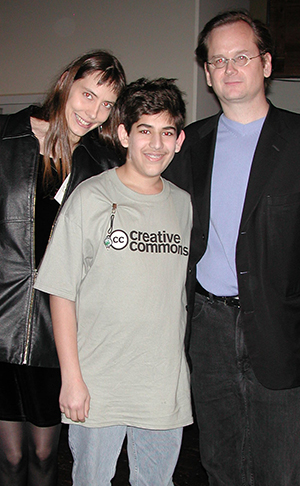
Lisa Rein, Aaron Swartz, and Larry Lessig at the Creative Commons launch party, 2002. Photo: Gohsuke Takama.
Aaron’s early writings have this same characteristic blend of erudition, insight, and playHe co-wrote a technical paper with University of Maryland professor and Berners-Lee collaborator James Hendler. “The Semantic Web: A Network of Content for the Digital City,” which Swartz and Hendler presented in Kyoto in 2001, alternates between defining key semantic web terms like “Resource Definition Framework” and using those definitions to tell sly jokes:
Each RDF statement has three parts: a subject, a predicate and an object. Let's look at a simple RDF statement:
http://aaronsw.com/
http://love.example.org/terms/reallyLikes
http://www.w3.org/People/Berners-Lee/Weaving/
As you might have guessed, that says that I really like Weaving the Web.
Many of Aaron’s early writings have this same characteristic blend of erudition, insight, and play. At the memorial, David Segal pointed to a 2002 blog post where Aaron argues that complex, unread open-source licenses ought to be put into haiku:
PD [Public Domain]: do what you feel like / since the work is abandoned / the law doesn’t care
MIT: take my code with you / and do whatever you want / but please don’t blame me
LGPL: you can copy this / but make modified versions / free in source code form
MPL: like LGPL / except netscape is allowed / to change the license
GPL: if you use this code / you and your children’s children / must make your source free
RIAA: if you touch this file / my lawyers will come kill you / so kindly refrain
In October 2002, Aaron accompanied Lessig to the US Supreme Court to watch him argue the landmark copyright case Eldred v. Ashcroft. Eldred was a failed constitutional challenge to the Sonny Bono Copyright Extension Act, passed largely at the behest of the movie industry. On his blog, Aaron wrote that he’d imagined bumping into the MPAA’s Jack Valenti on the flight from Chicago to Washington:
“Jack!” I’d exclaim, as if we were old pals. “Going to the Eldred case?” Of course he was. “Going to be a good one.” “Hey, remember when you had that debate with Lessig?” I’d ask. “You said you were starting a new task force to make movies legitimately available on the Internet. What ever happened to that?” I imagine him mumbling and looking down at his watch. His plane is going to leave soon; he has to run.
But Aaron was fascinated by the Supreme Court itself:
I was impressed by how smart the Justices were. These were people who very thoroughly understood the issues and thought quickly on their feet. They were interested in long-lasting effects and classics, I doubted many cared much for Mickey or Steamboat Willie. It’s sad we don’t have this level of intellectualism and intelligence in the rest of our government today.
However, it was extremely funny that in such a formal setting, with imposing red drapes surrounding the room and the Justices sitting high above the supplicants in big chairs that the Justices were so informal. They interrupted each other, spun around and tipped back and forth in their chairs, and some even pretended to go to sleep with their head on their desks. The whole thing looked like a bunch of kids and school, all of which would almost certainly be diagnosed with ADD for their curiosity and inability to resist asking questions. Macki mentioned that Justice Clarence Thomas looked like he was chewing gum, trying hard to hide it from the teacher.
Aaron knew that the internet had transformed how knowledge could be shared, and had seen first-hand that different approaches to intellectual property were possible. He’d helped to create them. The technical limitations, once identified, could be isolated and solved. The structures could be worked out within the boundaries of the law. What remained were the moneyed interests who stood to lose from the emerging transformation of intellectual property. The copyright fights of the early ‘00s showed that these organizations were willing to use the law and bully ordinary people to enforce those interests. It also showed that, where the law failed, they would use their wealth and visibility to try to change the law.
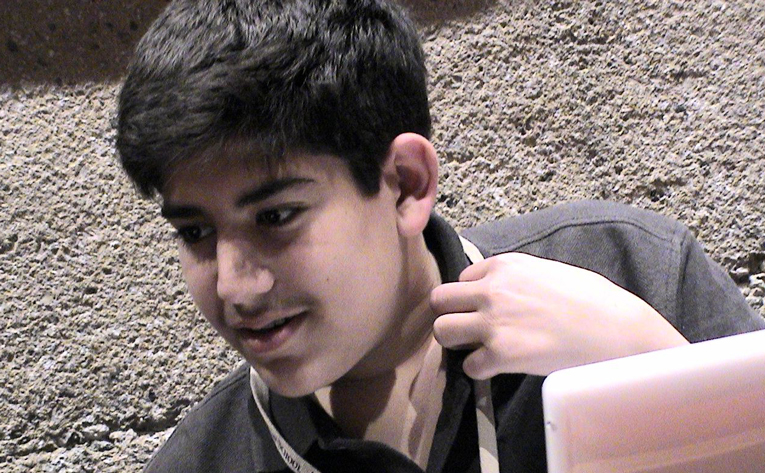
Palo Alto, 2003. Photo: Doc Searls
Copyright and the RIAACopyright and the RIAA
The Consumer Broadband and Digital Television Promotion Act (CBDTPA) doesn’t roll off the tongue now, but in 2002, it was every bit as frightening in its potential to transform digital technology as SOPA and PIPA were. The CBDTPA would have prohibited any kind of technology that could be used to read digital content without DRM. (I’ll repeat that, because it seems important and kind of amazing.) Nothing — no computer, no e-reader, no iPod, no TV or DVD player — could exist without DRM. Every machine would have a piracy detection system built-in.
This wouldn’t have just prohibited file-sharing and burning mix CDs. The only makers of culture, software, or scholarship who could afford a system of total DRM would be giant companies. It was using the specter of lawless pirates and starving artists to make a naked power grab in the sphere of intellectual property.
"There are a lot of people, a lot of powerful people, who want to clamp down on the internet."Aaron called the RIAA’s strategy of lawsuits and legislation “copyright terrorism,” a pretty loaded term less than a year after Al-Qaeda’s September 11 attacks. The world was increasingly politically paranoid, with mandatory DRM of a piece with airport security theater and combatants detained without trial. When you read his blog posts from this time, it seems obvious that this experience fundamentally changed how he thought about these problems and his own role in helping to solve them. It wasn’t downloading MP3s on Napster or hanging out with Cory Doctorow and Larry Lessig that made Aaron a critic of the copyright industry and a political activist; it was the conjunction of the CBDTPA and the War on Terror.
In 2003, when the CBDTPA was withdrawn after a “truce” between the music and computer industries, Aaron was only further jaded. What had been a fierce fight by him and his colleagues at Creative Commons, the EFF, the FSF, and elsewhere had turned into a piece of kabuki theater for Washington lobbyists, where one industry pretended to ignore DRM and the other industry pretended to ignore fair use. In an argument between two giants, neither could be trusted to be an honest broker. What’s more, both would claim the mantle of the people, and credit for any compromise.
Years later, when the precursors to what became SOPA started to circulate in Washington, and the content and computing industries began to throw glancing jabs at each other, Aaron had seen this script before. Sure enough, he would say, technology lobbyists were primarily interested in making the bill “better,” less damaging to their companies’ bottom lines, rather than defending the web and its users. As he said in 2012 in his “How We Stopped SOPA” speech:
It will happen again. Sure, it will have yet another name, and maybe another excuse, and it will do its damage in a different way. But make no mistake: the enemies of the freedom to connect have not disappeared. The fire in those politicians’ eyes hasn’t been put out. There are a lot of people, a lot of powerful people, who want to clamp down on the internet. And to be honest, there aren’t a lot who have a vested interest in protecting it from all of that...
We won this fight because everyone made themselves the hero of their own story. Everyone took it as their job to save this crucial freedom... If we forget that, if we let Hollywood rewrite the story so that it was just big company Google who stopped the bill, if we let them persuade us that we didn’t actually make a difference, and we start seeing it as someone else’s responsibility to do this work, and it’s our job to just go home and pop some popcorn and curl up on the couch to watch Transformers — well then, next time, they might just win. Let’s not let that happen.
Aaron had already been a political activist before SOPA. In the wake of the 2008 financial crisis, he joined the Progressive Change Campaign Committee, He was part of the PCCC’s original team in January 2009 and stayed until August 2010, helping develop its technology and working for Wall Street reform. That experience and the urgency of the SOPA fight helped him form his own political organization, Demand Progress. But in many ways, this was a continuation of those copyright fights from the early 2000s. Spinning the story of the SOPA fight after the fact, he would say that by 2010, he “didn’t care about copyright,” that the issue had grown “too small” for him compared to health care or financial reform. But that’s a downright fib. Aaron was deeply interested and engaged in those larger issues, but never stopped caring about copyright. SOPA simply raised his visibility along with the stakes.
RedditAfter CBDTPA and Creative Commons, but long before SOPA, Aaron saw the movie Manufacturing Consent: Noam Chomsky and the Media and read Noam Chomsky’s book Understanding Power. He had what he called an epiphany:
For weeks afterwards, everything I saw was in a different light. Every time I saw a newspaper or magazine or person on TV, I questioned what I thought knew about them, wondered how they fit into this new picture. Questions that had puzzled me for years suddenly began making sense in this new world. I reconsidered everyone I knew, everything I thought I’d learned. And I found I didn’t have much company.
It’s taken me two years to write about this experience, not without reason. One terrifying side effect of learning the world isn’t the way you think is that it leaves you all alone. And when you try to describe your new worldview to people, it either comes out sounding unsurprising (“yeah, sure, everyone knows the media’s got problems”) or like pure lunacy and people slowly back away.
Aaron went to Stanford University for a year. He described Stanford as “an idyllic little school in California where the sun is always shining and the grass is always green and the kids are always out getting a tan.” He was 17, and expected every encounter to be as vivid and engaging as the one he had reading Chomsky’s book. Bored, he took an invitation from Paul Graham to join the inaugural class of the startup incubator Y Combinator to create a new kind of media company. As a bonus, he could move to Cambridge, home to the W3C, the Media Lab, and Noam Chomsky. The company and product Aaron created was called Infogami. Two members of his YC cohort included Alexis Ohanian and Steve Huffman, who founded Reddit.
Insisting that Aaron wasn’t a co-founder of Reddit is a bit like arguing that Ringo wasn’t really a Beatle because he only joined the rest of the band before their first records came out. Technically, there’s a point to be made here, but it isn’t ultimately that significant. Very early on, the two companies merged and Aaron became a full co-owner of the combined company. Reddit soon switched its programming backend from Lisp to Python, using a web development library Swartz built called web.py. The site stabilized, and quickly took off. The buzz from its Y Combinator connection eventually snowballed into millions of users each month, with a remarkable percentage of that traffic rebounding back to news sites. After long negotiations and intense fighting between the founders, Condé Nast bought the community, its technology, and the team behind it, for millions of dollars. The Reddit team moved into Wired’s offices in San Francisco. Aaron was rich. And he was miserable.


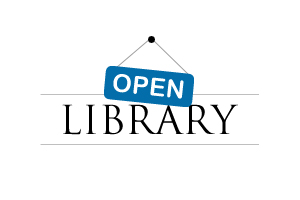
Aaron tells the story of how he left Reddit in different ways at different times and contexts, but it seems clear he was disillusioned, burned-out, and depressed:
I couldn't stand San Francisco. I couldn't stand office life. I couldn't stand Wired. I took a long Christmas vacation. I got sick. I thought of suicide. I ran from the police. And when I got back on Monday morning, I was asked to resign.
He’d written a short story on his blog called “Dying” that was interpreted as a suicide note. It’s about a character named Alex who gives up and resumes eating, suffers acute stomach pain, and kills himself. Alexis Ohanian had the police break into Aaron’s apartment to make sure he hadn’t killed himself. The stomach pains that plagued Aaron intermittently through his twenties were real. So was the depression. (Aaron would later say “I wasn’t in my right mind when I wrote it.”). After this episode, Aaron resigned from Reddit.
Aaron was rich, and he was miserableIt may be telling that the two known times Swartz was crippled by depression were facing prosecution and facing an office job; after he gained a large amount of money from his work and when he seemed that he would lose all of it because of his activism. The two moments are color negatives of each other. The only common thread, apart from Aaron’s personality and neurochemistry, seems to be a premonition that none of the work he had done mattered, and that there was nothing left to do. He couldn’t change anything real.

“How We Stopped SOPA” keynote at Freedom to Connect, 2012. Photo: Doc Searls.
PACER and Open LibraryPACER and Open Library
In 2007, now nearly 21, Aaron joined Brewster Kahle at the Internet Archive, launching Open Library. Open Library is a classic Swartz project:
- Pull down huge amounts of metadata from libraries and other databases;
- Generate a web page for every book in those databases;
- Allow anyone to edit those web pages;
- Make the entire site free to the entire world;
- Encourage the entire world to continue to add to it.
It also planted the germ of an idea. If he could use these networked records, hidden behind the virtual walls of government and university, and create a public, open alternative, what else could he do? Where else were the pressure points where knowledge was kept from public view, but could be opened up in almost infinite quantities to someone with the right key? In retrospect, it’s natural that Aaron turned to PACER, and then was led to JSTOR, with one case serving as a preview of the other.
PACER is the Public Access to Court Electronic Records system. It’s a government-run database of court filings — public, uncopyrightable documents — that charges 10 cents per page to access. (Before 2011, it was 8 cents per page.) The money pays for the cost of the database, with fees capped at $3 per document and waived if they’re less than $15 for a single user in a quarter. It’s bulk downloaders like law firms and news organizations who largely wind up supporting the service. If you, as an individual, are looking for a single record, it would likely be free.
But what this really means is that you can’t do anything at scale with court records. You can’t build a better search engine for them, or do large-scale research, not without accruing enormous costs. (LexisNexis, for example, builds a better search engine on top of PACER and other records — but charges huge sums for access.) There’s also something offensive about the idea that no ordinary citizen could possibly be interested in more than five legal documents every three months. All this is troubling for documents in the public domain. And Aaron happened to work for the Internet Archive, a company devoted to providing free, searchable access to any and all documents in the public domain.
PACER was an embarrassmentAaron connected with Carl Malamud, a longtime public domain advocate and founder of public.resource.org, who’d been pressuring state and federal governments to stop charging for public documents. Many of these campaigns were successful: in 2007, after Malamud digitized and posted government videos in a project called “FedFlix”, CSPAN opened up access to its video archive, with the network’s congressional hearings appearing for the first time at the Internet Archive. A letter campaign and a full crawl of the Government Printing Office’s five million web pages led to the price of government journals being dropped from $17,000 per year per product to $0, with the GPO agreeing to work with public.resource.org on building better metadata. So there was good reason to think that a similar type of public-minded guerrilla activism could lead to a similar response and reform of PACER.
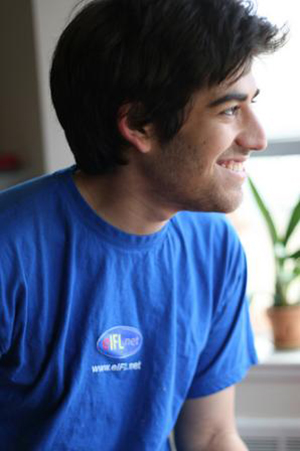
At the EIFL Visioning Retreat, Cupramontana, Italy, 2008. Photo: Quinn Norton.
The problem was Aaron. In September 2008, the federal district courts and the GPO had opened a free trial of PACER limited to 17 libraries around the country. Malamud urged open-access activists to download as many documents as they could and donate them to be archived in a free database. Since the documents weren’t under copyright, they couldn’t be taken down under the DMCA or any other law. And access through the libraries was free, right?
Aaron wrote a script to continuously and automatically download PACER documents. By September 29, he had downloaded 19,856,160 pages of text — around 3 million documents, or somewhere between 1 and 20 percent of the entire database. And then all the servers shut down. According to public statements from its officials, PACER was bewildered by the spike in downloads and believed its security had been compromised. They cancelled the free access trial.
The FBI opened an investigation. The downloaded pages had been sent to an Amazon server, registered under Aaron’s name, using his parents’ home address in Highland Park. Aaron later was able to get his FBI file under an FOIA request, and called the bureau’s notes on him “truly delightful.” Meanwhile, he posted the PACER documents he’d downloaded on the Internet Archive, making them freely searchable. At eight cents per page, they were “worth” as much as $1,588,492.80. Ultimately, the FBI investigation went nowhere and was wrapped up. No laws were broken, no charges were filed. But PACER was revealed to have huge problems with redacting private details recorded in legal filings. The press was talking about how outdated its technology was, and asking hard questions about its costs and fee structure. It was an embarrassment. And the argument about public access to public documents was far from over.
Aaron had become a target for investigation by the federal government. He was on file as a “hacker” who was willing to exploit gaps in the law and in networks in order to make his point. A year later, he wrote a similar script to download journal articles from JSTOR, which also had huge repositories of public domain texts. This time, the Secret Service and US Attorney’s office, led by Assistant US Attorney Stephen Heymann and his boss Carmen Ortiz, had both the discretion and the institutional incentives to run wild on him. And that, with many, many ellipses, is how we got here.

At the Creative Commons Panel, 2008. Photo: Doc Searls.
Why was Aaron prosecuted?Why was Aaron prosecuted?
I don’t believe the conspiracy theories about Aaron Swartz’s prosecution and death, and neither do the people who were close to him. I heard speculation that he’d been rung up for multiple multi-year charges to pressure him to inform on contacts in the hacker community, Anonymous, or Wikileaks — anyone who could be a clearer criminal or political target. And maybe the US Attorney’s office was deluded enough to think Aaron ran deeper with those groups than he did, that everyone who writes code and is interested in anonymization software is identical and knows what anyone in the collective is up to. But ultimately, the simplest explanation here is the best. The government didn’t need to prosecute a big fish if it could make Aaron look like one. The police don’t need to stop drug kingpins if they can make anyone in a car with drugs look like one. Turning disobedience into felonies becomes the easiest thing in the world.
The prosecutors wanted headlines, conviction statistics, promotions, and to make the public feel that computer crime was important and dangerous but something was being done about it. Aaron Swartz, because of his prominence in the tech community and history with PACER and SOPA, was just notorious enough to get the job done. Aaron Swartz was linkbait.
Aaron Swartz was just notorious enough to get the job done; Aaron Swartz was linkbait Fighting the bigger fightFighting the bigger fight
At Aaron’s NYC memorial service, Freedom to Connect’s David Isenberg said something that won’t get out of my mind:
I'm afraid that Aaron's legacy is going to be dumbed down to 'hacker,' 'copyfighter,' the way the media dumbed down the SOPA fight to Google versus the telephone companies.
So let's not forget that Aaron fought the bigger fights: the fight for access, the fight for justice, the fight for democracy, the fight for us, for this community, and for the greater community that is all humankind.
I also keep thinking about a point Aaron’s father made during his eulogy for his son in Chicago, and that Thoughtworks’ Roy Singham reprised in New York. Over and over again, we’ve seen technology companies, whether startups or giants, push the boundaries of the law for their own gain. We celebrate it. We call it “disruption.” The existing commercial powers largely understand its motivations and can deal with it using tools commercial powers understand: civil lawsuits, ad campaigns, market pressure, private agreements, buyouts, and payoffs.
“Aaron's legacy is going to be dumbed down.”Aaron didn’t play that game. After he sold Reddit, he couldn’t be bought. In fact, he was spending his own money, and his valuable time, on campaigns for the public good, and helping others to do the same. He was a realist about the government, media companies, and Silicon Valley. His experience with all of them made him grow up too soon. But he also never stopped being that not-even-teenager who believed in the utopian possibilities latent in the World Wide Web. He never stopped believing in the power of small groups of people who were willing to devote their attention to small problems and nagging details in order to create the greatest good for the greatest number. Aaron played in that space without resolving its tensions.
It’s that collapsing telescope between the many and the few, the rational and the altruistic, the minute and the world-historical, the irreducibility of life as it is lived and the universality of the ideals that life should serve.
“What do you believe in?”“What do you believe in?”
I’m also still grappling with the discomfort of Taren’s question. “If you’re in the tech sector, why are you there? What do you believe in? If you believe that technology is making the world a better place why do you believe that? Do you really understand what makes the world a bad place to begin with?”
Unexpectedly, it resonates with something Google’s Larry Page said recently:
If you read the media coverage of our company, or of the technology industry in general, it’s always about the competition. The stories are written as if they are covering a sporting event. But it’s hard to find actual examples of really amazing things that happened solely due to competition. How exciting is it to come to work if the best you can do is trounce some other company that does roughly the same thing? That’s why most companies decay slowly over time. They tend to do approximately what they did before, with a few minor changes. It’s natural for people to want to work on things that they know aren’t going to fail. But incremental improvement is guaranteed to be obsolete over time. Especially in technology, where you know there’s going to be non-incremental change. So a big part of my job is to get people focused on things that are not just incremental.
Our interest in technology is in the business of technology, and the competition between technology companies and their products. But our belief in technology is the belief in non-incremental change. Not in emergent form factors or paradigm shifts in venture funding, but change in our culture, our politics, our laws, our experiences, and ourselves.
Believe in non-incremental changeIt is easy to lose sight of that promise without a mind like Aaron’s, that could juggle a dozen things at once, just as it’s easy to take for granted someone you love. Sometimes, to recognize it in the noise, you need a hard reboot, a shock to the system. Aaron Swartz’s death was a shock to the system. It’s uncomfortable and uncertain, but it creates an opening going forth. It pierces us like an arrow into the future.
“This is no time to engage in the luxury of cooling off or to take the tranquilizing drug of gradualism,” as Martin Luther King Jr. would say, in a speech still covered by copyright. My freedom is inextricably bound up with your freedom. “We cannot walk alone. And as we walk, we must make the pledge that we shall always march ahead. We cannot turn back,” as Barack Obama would say, quoting King at the 2008 Democratic Convention, a moment of uncertain hope amidst disaster, seemingly free from the heartbreaking compromises to come, infinitely open to opportunity.
Don’t turn back. We can’t let that happen.
Lead photo credit: Sage Ross
قلب: First Arabic Coding-Language as Art
billtronSomebody tell DJ /rupture
Ramsey Nasser hat eine Programmiersprache namens قلب (‘Alb) in arabischer Kaligraphie programmiert, dazu musste er sämtliche Tools (Terminal, Texteditor) neu aufsetzen. Animal NY hat ein kleines Interview mit dem Mann, rumspielen kann man damit hier. Finde ich extrem spannend, auch wenn sich das alles erst im experimentellen Entwicklungsstadium befindet.
“قلب, as far as I know, is the first programming language that’s also a conceptual art piece,” says Ramsey Nasser, computer scientist and a fellow at New York’s Eyebeam Art+Technology Center. He can’t read the Russian hacker forums or the Chinese Twitter accounts buzzing about قلب (“alb”, “heart”), but he shows us how his terminal can understand Arabic calligraphy. It’s novel. It’s crucial. It’s incredibly exciting.
[…] programming seems to hate Arabic-speakers. Tools fall apart reading Arabic. Interfaces break. Terminals crash. Text readers don’t know what to do with it. “Practically speaking, it’s more sensible to just learn English in order to learn code. That shocked me,” says Nasser. “I believe that code and computation should be something anyone can access.”
And so, Nasser set out to create a non-Latin Lisp in Arabic calligraphy from scratch. The challenge was immense. Every tool had to be custom made. Relatives were recruited for linguistic assistance. And viola…
ARABIC PROGRAMMING LANGUAGE AT EYEBEAM: قلب OPENS THE WORLD
Will California Be the Next Big Shale Oil Play?
The Monterey shale is hardly a new prospect. One of the first documents my search turned up was a 1905 USGS report on its fossil content, noting its oil potential. First production from this shale apparently occurred a decade earlier. Moreover, it appears that the Monterey formation, which underlies many of the state's conventional oil fields, is actually the "source rock" for those fields: the zone from which the hydrocarbons trapped in their reservoirs originated. So the estimated 400 billion barrels or so of original oil in place in the Monterey have presumably already yielded a substantial share of the roughly 29 billion barrels of oil that California's oil fields have produced to date.
Development of this play doesn't just lag shale projects elsewhere because of California's well-known environmental sensitivity. The geology of this deposit also differs significantly from that of the Bakken and other east-of-Rockies shale plays, partly due to its relative youth, as well as the effects of the Golden State's seismic activity. Its oil-bearing strata are thick and often jumbled up by past earthquakes. One expert characterized this as signifying that the Monterey wasn't a "resource play" but a "structural play." So unlike the Bakken or Eagle Ford, individual wells carry higher risks of failing to yield commercially useful output. It also makes it less likely that steady efforts in the Monterey will result in an easily replicable recipe for unlocking the entire deposit.
That brings us to fracking, which is surely as controversial in California as anywhere, even though, as in many other locations, it's been done safely and with little fanfare for decades. The state recently announced preliminary fracking regulations, but this may have less impact on development of the Monterey shale than one might suppose. That's because this formation seems to be less amenable to fracking, or at least to the combination of horizontal wells and multi-stage fracking that's been a game-changer elsewhere. Other techniques, such as acid injection, may prove more useful.
However it is eventually unlocked, the Monterey shale offers significant benefits to California. Start with the fact that the state's oil production has been in steady decline since the mid-1980s. Together with the depletion of Alaska's North Slope field, that has meant that the US West Coast, which was once a net exporter of oil, now imports increasing quantities of oil--half of it from OPEC--to meet local demand. That trend has continued even as the import dependence of the rest of the country has fallen substantially due to higher production and receding demand. The Monterey could slash California's imports, while adding billions of dollars a year to the local economy and to the shaky state budget, along with lots of good jobs.
It could even provide environmental benefits. Restoring oil self-sufficiency would reduce the risk of spills from the tankers bringing in imports, while refilling existing infrastructure. And if the Monterey yields oil similar in quality to the light, sweet crude now being produced from the Bakken and Eagle Ford shales, it could actually cut both greenhouse gas emissions and local pollution by reducing the refining intensity required to turn the state's current diet of heavier crudes into ultra-low sulfur gasoline and diesel fuel.
I suspect from my research in the last few weeks that anyone betting on an imminent explosion of oil output from the Monterey shale is likely to be disappointed. The process seems likely to be slower than elsewhere, though with a bigger potential payoff. But that doesn't make it irrelevant to a state that has set its sights on being at the forefront of the transformation to cleaner energy sources. California still consumes 1.8 million barrels per day of petroleum products, and it will burn many more billions of barrels on its way to its chosen future of electric vehicles running on wind and solar power, and trucks and buses burning compressed or liquefied natural gas. Developing the Monterey shale won't solve all of California's energy challenges and might create a few new ones, yet it could prove another timely contribution from a local oil industry that has been a major driver of the state's economy for well over a century.
Marine band confirms Beyoncé lip-synched at Obama inauguration
Singer joins ranks of Yo-Yo Ma and Whitney Houston after lip- synching her way through rousing rendition of national anthem
It may not be Watergate, but Barack Obama's second term has been hit by its first "scandal", barely 24 hours since he took the oath of office.
The United States Marine Corps band, which played throughout the pomp and ceremony of Obama's historic inauguration, said Beyoncé lip-synched her way through a stirring rendition of The Star-Spangled Banner.
The news, revealed by The Times and rapidly confirmed by such august news outfits as ABC News, was greeted by howls of dismay on social media. Beyoncé's performance had attracted rave reviews, and there was widespread disappointment that she had relied on a studio version rather than attempt a live rendition.
"We don't know why Beyoncé decided to use pre-recorded music," a spokesperson for the band told the Washingtonian blog. "All music (for inaugural ceremonies) is prerecorded as a matter of course, and that's something we've done for years and years," the spokesperson added. The band played live for the rest of the ceremony, but was asked to use the pre-recorded track for Beyoncé's performance.
Later in the day, the Marine Corps backed away somewhat from the band's earlier statement. Captain Gregory Wolf, a spokesman for the Marine Corps, confirmed that while the musicians did indeed mime the national anthem as requested, "no-one in the Marine Band is in a position to assess whether it was live or prerecorded".
Colonel Michael J Colburn, the band's conductor, told the Washingtonian that although he could not confirm whether Beyonceé sang live or not, the band and the singer had decided on Sunday night to use a recorded track because they had not had time to rehearse together. "She wasn't comfortable performing without a rehearsal, and I wasn't comfortable that either," he said.
The news of Beyoncé's apparent decision to shy away from a live performance, which rapidly began spreading on social media, appeared to explain why she had sent out a photo of herself on Instagram several days ago in which she sat in a recording studio holding a piece of sheet music with the lyrics of the American national anthem on it. It also explained why Beyoncé at one point during her performance was able to dramatically remove her ear-piece.
The Star-Spangled Banner is a notoriously difficult piece to sing, as it spans a huge vocal range. It was also bitterly cold in Washington DC on Monday. The combination of nerves and the cold may have influenced Beyoncé's decision to rely on the pre-recorded track.
In another development, ABC News revealed that Kelly Clarkson, a former star from the reality show American Idol, had sung her song, My Country, Tis' of Thee, live. On a day when Obama laid out a bold liberal agenda for the country, that news was likely to have been the only bit of cheer for his Republican opponents. Clarkson has said in the past that she is a supporter of former Republican presidential candidate Ron Paul.
However, as it seems Beyoncé is set to take a – very minor – spot in the list of presidential scandals, she is far from the first major star to get caught in a moment of high profile fakery. In 2009 acclaimed violinist Itzhak Perlman and cellist Yo-Yo Ma "finger synched" their inaugural performances as cold weather made performing live extremely hard in the face of frozen strings and hands.
And in 1991 Whitney Houston's dazzling performance of The Star-Spangled Banner at that year's Super Bowl was also later revealed to be lip-synched.
Paul Harrisguardian.co.uk © 2013 Guardian News and Media Limited or its affiliated companies. All rights reserved. | Use of this content is subject to our Terms & Conditions | More Feeds
Enjoying Beer in the Can
The scene in the Metro-North bathroom Saturday night.
I added one vacated vessel to this rogue’s gallery of empties.
Hint: It wasn’t the Bud Light, the Bud Light tallboy, the Four Loko or the toilet paper.
It was a beer brewed a few miles from my house.
"When the virtual assistant first launched in early 2010, it was a standalone iPhone app called Siri..."
- SIRI RISING: The Inside Story Of Siri’s Origins — And Why She Could Overshadow The iPhone
Métafiltre, DemanderMéta and ParlerMéta
‘Hey Peeps, Remember When…’: Social Media and Shared Experiences for Geographically Scattered Cohorts
Response to building digital cohorts and online communities
'The Taste' review: Can you stomach a 'Voice' knockoff?
Links 1/22/13
I filled in for Yves tonight so she can focus on a project. It’s a doozy. It’s the bee’s knees, the cat’s pajamas, positively the lobster’s dress shirt. –lambert
Clues to Prehistoric Human Exploration Found in Sweet Potato Genome Science
Looting the bank? Local conspiracy allegedly snared millions of dollars Seattle Times
A new Gold Standard is being born Ambrose Evans-Pritchard, The Telegraph. A bit stale but interesting if true.
Weidmann warns of currency war risk FT
Defeat in German regional elections dents poll hopes of Merkel and heir Guardian
Scottish independence is fast becoming the only option Guardian
Edward Tufte’s defense of Aaron Swartz and the “marvelously different” Dan Nguyen’s Hack Place
The enormous profits of STM scholarly publishers The Imaginary Journal of Poetic Economics
Nine facts about top journals in economics Vox
The Practitioner’s Tale economicprincipals.com
A confederacy of dorks Interfluidity. IOR.
America’s debt dilemma: A looming crisis FT. Remarkably, or not, single payer is not mentioned as a cost containment measure.
No Joy in Vindication Another Word For It. Auditing the U.S. government.
Obama’s Inauguration Speech Dealt A Devastating Blow To Deficit Hawks Joe Weisenthal, Business Insider. Interesting if true.
Inaugural Address: Some Quick Reflections, and What Obama Did Not Say Jesse’s Café Américain
Obama Needs a New Deal Robert Shiller, Slate
Inaugural hagiography
Can Obama Speak to History? The New Yorker (Klassy!)
The Big Deal Paul Krugman, New York Times
Live-Blogging The Second Inauguration Of Barack Obama Andrew Sullivan, The Atlantic
(BAGNews photos)
An expansive case for progressive governance, grounded in language of Founding Fathers Greg Sargent, WaPo
Chart of the day: US stock market vs. US labor market AEI
Retail Sales and Jobs Financial Armageddon
Existing Home Inventory up 2% in mid-January CR
A confidence hit for US housing? Macrobusiness
U.S. Oil-Production Rise Is Fastest Ever WSJ
Energy Industry Doesn’t Understand Algeria Attack oilprice.com
Drillers explore ‘groundbreaking’ shallow fracking technique Pittsburgh Tribune
We’re in contact with uncontrolled chemicals McClatchy
The Trend Against Skeuomorphic Textures and Effects in User Interface Design Daring Fireball
Google search is already open source math babe
Are annotations the new comments? Felix Salmon, Reuters
Kickstarter loves films. Seriously, just look at these ridiculous numbers GigaOM
Israeli news broadcasters don’t cry Haaretz. Google headline. Must read.
Antidote du jour (furzy mouse):
Privilege And The White Dude Super-Detective
By Tami Winfrey Harris
I’m a sucker for a good mystery. It doesn’t matter whether the detective sports a deer stalker cap, a rumpled raincoat, a string of tasteful pearls, or my name (sistah detective Tamara Hayle. Check her out!); whether the action takes place in London, L.A., the English countryside, Maine, or Newark—give me a suspicious death, a handful of clues and red herrings, and an intrepid sleuth, and I’m in.
My long love affair with the mystery genre (love you, Quinn Martin!) has taught me many life lessons: for instance, no one—no matter how benign the questions—wants to give up information to the po-po; professors, waitresses, street toughs—all resolutely anti-snitching. I have learned to avoid both the University of Oxford (Inspector Lewis) and fictional Hudson University (Law & Order), as they are hot beds of murder and mayhem. I have also learned that my invisibility as an aging woman will make detective work a perfect career in my dotage. (Can’t wait for the little old lady detective parties, where Jessica Fletcher and Miss Marple explain how being unassuming lets one uncover all the dirt.) And I have learned that race and gender matter, even in the fictional detective world, thanks to a currently quite popular mystery genre type: The White Dude Super-Detective.
White Dude Super Detective (WDSD) isn’t a police officer, but he is so much smarter than the official (and legal) keepers of law and order, that authorities follow his lead. But unlike, say, Jessica Fletcher or Jane Marple, he is no picture of propriety. WDSD is given power over criminal investigations despite traits that usually result in marginalization: Drug addiction (Sherlock Holmes), mental illness (Monk*, Monk; Dr. Daniel Pierce, Perception; possibly Holmes again), a criminal history (Patrick Jane, The Mentalist); general immaturity (Richard Castle, Castle).
As unbelievable as WDSD characters are, they would become infinitely more so if their race or gender were changed. In The Mentalist, WDSD Patrick Jane once grifted clients as a fake psychic, but now works as a hard-to-control resource for the California Bureau of Investigations. What if the Jane character were a Latino ex-grifter? Would his arrogance and propensity for sneaking into suspect’s homes and accusing wealthy businessmen of impropriety read as quirky and charming? Would anyone believe that a police force would allow such behavior? Could the Scotland Yard of fantasy be down with a coke-addicted black Sherlock—no matter how clever? The San Francisco police department abides Adrian Monk’s obsessive-compulsive disorder, as the FBI allows Perception’s Dr. Daniel Pierce to assist on cases, despite his unmedicated schizophrenia and paranoia, which results in hallucinations. Could a black woman be cast in those roles to the same effect? I submit, that even in the fictional worlds of literature and television, race and gender matter. Belief can only be suspended so far. And this archetype is reliant on power that comes with white maleness in American society.
Arthur Conan Doyle may have created the granddaddy of all WDSD in the late 19th century, but modern-day Sherlocks are popping up all over, of late. See them almost 24/7 on the US cable channel, TNT, home of Perception, The Mentalist, and Castle. Indeed, it’s my habit of leaving the TV on this channel while surfing the ‘net at night that crystallized the archetype for me. It seems the WDSD archetype is having a heyday, and it’s worth asking why. Art is often the conduit for backlash against societal change. For instance, author Ariel Levy argues that the rise of “raunch culture,” including sexualized female images in television and film, is a response to feminist gains. Is the prevalence of white dude super detectives in American pop culture simply a continuation of the way race and gender have always been portrayed in art or a backlash against changing racial demographics and female success–an opportunity to elevate white maleness, which isn’t as universally and unquestionably elevated as it once was?
*Though Tony Shalhoub — who not only starred in Monk but became an executive producer — is a Lebanese-American, his character’s ethnicity was never explicitly addressed, making him written to embody ”mainstream” white, male American culture.
Drinking the Bottom Shelf: Is $10 Exclusiv Vodka As Good as Grey Goose?

I got a flu shot the other day, even though I am a paragon of health and I have very little contact with the short and sneezy subset of humanity that spreads disease via finger paint snot art and sociopathic disregard for personal space. I'm not a kindergarten teacher, an emergency room nurse, or any other sort of virus magnet, but I still got flu-proofed the other day because Bottom Shelf research director Emily told me to, and I do what I'm told when all it requires is a 5-minute pit stop on the way to the ham store.
Even though I'm not likely to catch the flu and I try to limit my exposure to needles and bureaucracy, I didn't mind filling out a couple of forms and getting shot in the arm, because I try to do my part for herd immunity. And, like I said, Emily told me to, and I figured I should listen to her because she is definitely my wife and possibly a doctor.
I'm not entirely certain what Emily does all day. I know she works at a hospital, and she's not the janitor or the accountant, but I don't think she's a doctor—or at least not a doctor-doctor—either. She went to grad school for a hundred years and she wears those doctor sweatpants to work sometimes, which would seem to argue in favor of physician-hood, but then that doesn't explain why my Lexus is short a couple wheels and says Schwinn down the side. Beats me. All I know is she works at a hospital with her buddy Jessica.
Jessica went to our wedding, where she met our friend Alex. Emily and I usually aren't big on arranging romantic matches, because we're selfish and because most of our friends are either picky or undateable, but we thought Jessica and Alex might make a nice team because they both have the good sense to like us and liquor. They are now happily drinking together several nights a week. Jessica favors tequila, as do most honest women, while Alex is more of a Jameson kind of fellow. But he'll drink high-end vodka in his Red Bull from time to time, and he's from Russia, and this is a story about vodka, so let's take this opportunity to address Exclusiv, a newish wheat vodka from Moldova.
It turns out Moldova doesn't even border Russian (Romania and Ukraine), but I don't have any Moldovan friends I do have a deadline, so we're sticking with the Alex theme here. Alex makes a good living but I'd still like to find him a cheaper substitute for his Grey Goose, because Jessica likes boats and yet for some reason does not own a boat. I'm not one to tell a man how to run his relationship, but I will note that I got a flu shot just to keep my wife happy, because sometimes you have to indulge your partner's desire for luxuries such as rudimentary walk-in health care and boats.
I'd never heard of Exclusiv until their publicist emailed me a couple weeks ago to announce that this up and coming import focuses on quality and value rather than flash and packaging, which allows Exclusiv to be "on par with competition like Grey Goose and Ketel One." She called Exclusiv one of the "highest quality vodkas on the market" and noted that it won Double Gold in the 2012 San Francisco World Spirits Competition. Sounds like Jessica better start thinking of boat names, right?
Sadly, no. Exclusiv isn't bad, and it's certainly worth the $10, but when I tasted it blind next to Grey Goose (both are wheat-based), it was depressingly easy to tell the difference from the first whiff. Grey Goose smells like very little, with light pine and a hint of citrus astringency the only clues that it's not water. Exclusiv smells like cheap vodka: predominantly nail polish remover, albeit with an admittedly pleasant undercurrent of vanilla.
The good news for bargain-hunters and Moldovophiles is that the difference is less pronounced where it counts: Exclusiv's bark is worse than its bite, as the chemical notes are muted in the drinking. Exclusiv is eminently drinkable, and I will keep my free sample around for Bloody Marys and what not. It is not, however, "on par with competition like Grey Goose."
About the author: Will Gordon loves life, particularly the parts of life that involve bourbon and Totino's Pizza Rolls. You can eat and drink with him in Boston or follow him @WillGordonAgain.
So this is what time zones look like in Antarctica
 Pretty trippy, right? Given that Antarctica rests on every line of longitude, you might be tempted to think the continent observes every single time zone, but this is not the case. In fact, as the maps featured here illustrate, even regions that lie along the same meridian don't necessarily observe the same time zones, due in large part to the range of territorial claims on the continent. Some places — labeled in red — have no time zone, and just observe Coordinated Universal Time, by default. More »
Pretty trippy, right? Given that Antarctica rests on every line of longitude, you might be tempted to think the continent observes every single time zone, but this is not the case. In fact, as the maps featured here illustrate, even regions that lie along the same meridian don't necessarily observe the same time zones, due in large part to the range of territorial claims on the continent. Some places — labeled in red — have no time zone, and just observe Coordinated Universal Time, by default. More » Fireplace Wire: How much does a fireplace add...
 How much does a fireplace add to the value of an apartment in NYC? Units with fireplaces, which are often prewar and come with many other purveyors of "charm," are generally about 10 percent pricier than apartments without, but that's not the case everywhere—in Boston, a unit with a Frank Lloyd Wright-designed fireplace took forever to sell. [New York via Curbed NY]
How much does a fireplace add to the value of an apartment in NYC? Units with fireplaces, which are often prewar and come with many other purveyors of "charm," are generally about 10 percent pricier than apartments without, but that's not the case everywhere—in Boston, a unit with a Frank Lloyd Wright-designed fireplace took forever to sell. [New York via Curbed NY]
Wganda Kenya – Africa 5000 / Discos Fuentes 237323 – 1.975
Pilas! Djs y coleccionistas. ”AFRICOLOMBIA: El punto de encuentro entre dos culturas” pasate por la Tienda MONO y degusta una selección de acetatos tropicales, cumbias, salsas y afrocolombianos bien potentes. — con Fabian Altahona Romero. Punto de Venta (Champetas!!!) Vinilos Nuevos
|

 #todomono es una propuesta de diseño inspirada en el Caribe Colombiano, que busca recopilar y dar a conocer diversos aspectos de sus ciudades, con el fin de aportar desde el diseño a su conocimiento, a su lectura y a su construcción.
#todomono es una propuesta de diseño inspirada en el Caribe Colombiano, que busca recopilar y dar a conocer diversos aspectos de sus ciudades, con el fin de aportar desde el diseño a su conocimiento, a su lectura y a su construcción.
Creada en el 2006, #todomono mezcla las ideas de ciudad con el estilo de vida y manera de vestir de los jóvenes.
#todomono observa las costumbres, los hechos e historias de la Costa, para realizar sus diseños, promoverlos y divulgar con estos la identidad de sus ciudades.
#todomono es una marca que encuentra su inspiración en las calles y en la cotidianidad caribeña. Desde los habituales puesto de fritos hasta sus elegantes y antiguas manifestaciones arquitectónicas, pasando por los vendedores ambulantes del centro y los relatos de los abuelos.
